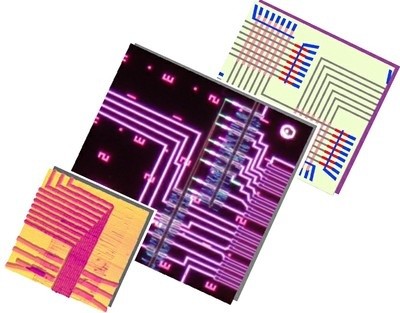Researchers from Harvard and MITRE announce world’s first programmable nanoprocessor and represents a significant step forward in the complexity of computer circuits that can be assembled from synthesized nanometer-scale components.Nanowire tiles can perform an advance because these ultra-tiny nanocircuits can be programmed electronically to perform a number of basic arithmetic and logical functions……..
Engineers and scientists collaborating at Harvard University and the MITRE Corporation have developed and demonstrated the world’s first programmable nanoprocessor.The groundbreaking prototype computer system, described in a paper appearing today in the journal Nature, represents a significant step forward in the complexity of computer circuits that can be assembled from synthesized nanometer-scale components.The versatile, nanoscale circuits are assembled into tiny tile-like nanoprocessors from sets of precisely engineered and fabricated germanium-silicon wires with functional oxide shells, having a total diameter of only 30 nanometers. Shown here are atomic force (left) and optical microscopy (center) images of a programmable nanowire nanoprocessor, and a corresponding schematic (right) of the nanowire circuit architecture.The work was enabled by advances in the design and synthesis of nanowire building blocks. These nanowire components now demonstrate the reproducibility needed to build functional electronic circuits, and also do so at a size and material complexity difficult to achieve by traditional top-down approaches.Moreover, the tiled architecture is fully scalable allowing the assembly of much larger and ever more functional nanoprocessors.An additional feature of the advance is that the circuits in the nanoprocessor operate using very little power, even allowing for their miniscule size, because their component nanowires contain transistor switches that are nonvolatile.This means that unlike transistors in conventional microcomputer circuits, once the nanowire transistors are programmed.They do not require any additional expenditure of electrical power for maintaining memory.




